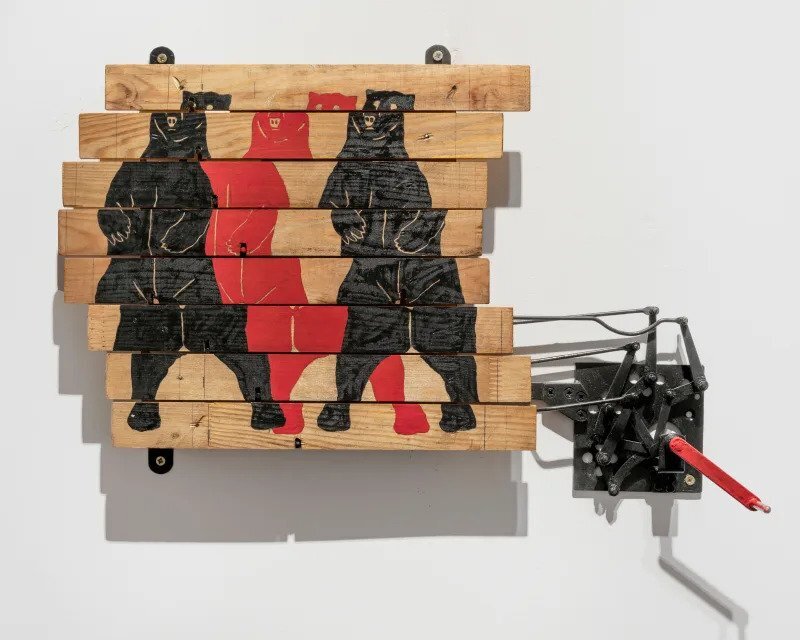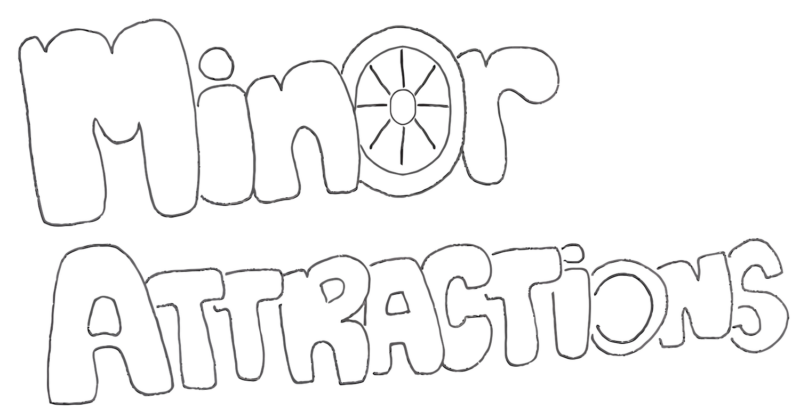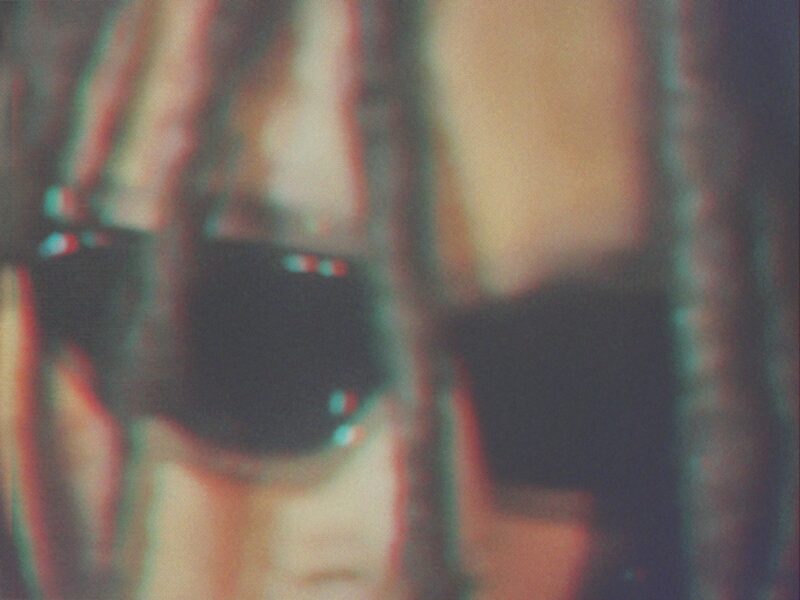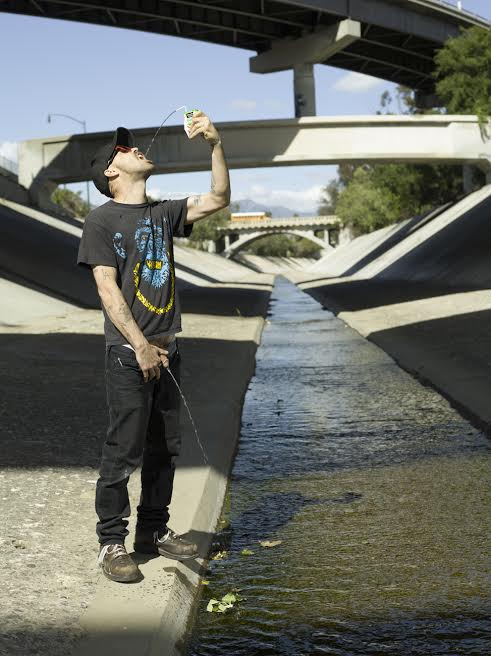
At times it can seem contemporary art has somewhat lost its way. Something that is fundamentally an extension of the artist can become stagnant and nothing more than a means of generating wealth for those who have invested in it. Of course an artist should be able to live off and profit from their work as much any hard-working person, but problems arise when the artist lands on an idea that has got them noticed, made them some cash and turned their art into something of high value. Then they stop. They stop generating new and fresh ideas and they just run with the thing that has worked – and will continue to work – because rich, powerful people have said it will.
If that approach is one side of the coin, then the other side is Joel Kyack.
Joel Kyack is an artist from Los Angeles whose work is a constant flow of reimagined themes, methodology and media, used to create a harmoniously imperfect improvisation. It has more in common with Ornette Coleman and free-form jazz than it does with most contemporary art practices.
I first encountered Kyack’s work around two years ago at Ghebaly Gallery in LA and was blown away by his ability to conjure anarchic tranquillity by constructing kinetic sculptures from ephemera and junk. He ties them together with a humour and an aesthetic that is deliberately fucking off the constructs usually employed by artists and galleries to guarantee profit.
Approaching the end of his first solo show in London, I caught up with Kyack to discuss class, his ‘anti-bourgeois aesthetic’ and the idea of outliving your art.
Can you give me a bit of background on you as an artist?
I was born in Pennsylvania, in the country, in a very rural working class place not unlike the north of England – sort of Gateshead, Newcastle. I went to the Rhode Island School of Design for undergrads. Then in my mid-30s I went to the University of Southern California and I stayed in LA.
I thought I was just gonna be in LA for school but I fell in love with the city – with the art scene there – and figured that that was as good a place to be an artist as anywhere. And I just got lucky with a gallery there that’s a really great space and got lucky with these guys [Workplace]. I mean that’s the short answer.
How did you get hooked up with Workplace?
I did a show in the north with these guys around two years ago at their space in Gateshead. The way I met them was through my Los Angeles dealer who was at Art Cologne a few years back. They saw some work and said, “Hey we’ve got a group show coming up. Can we just take this work instead of just shipping it back to LA?” and that began the relationship. Then I did a two person show here [London] with Eric Bainbridge. I did a performance here in the space.
So this is the first solo show for me in London and these are just some pieces that I’ve been working on and making here and there – some ideas that I had been playing with – ideas that I work with a lot in general. This show is about a lot of oppositional things happening or things that are in conversation. The painting of the primitive man pissing in a sort of beautiful woodsy scene, then you have me pissing in the LA River in a very, very different way.
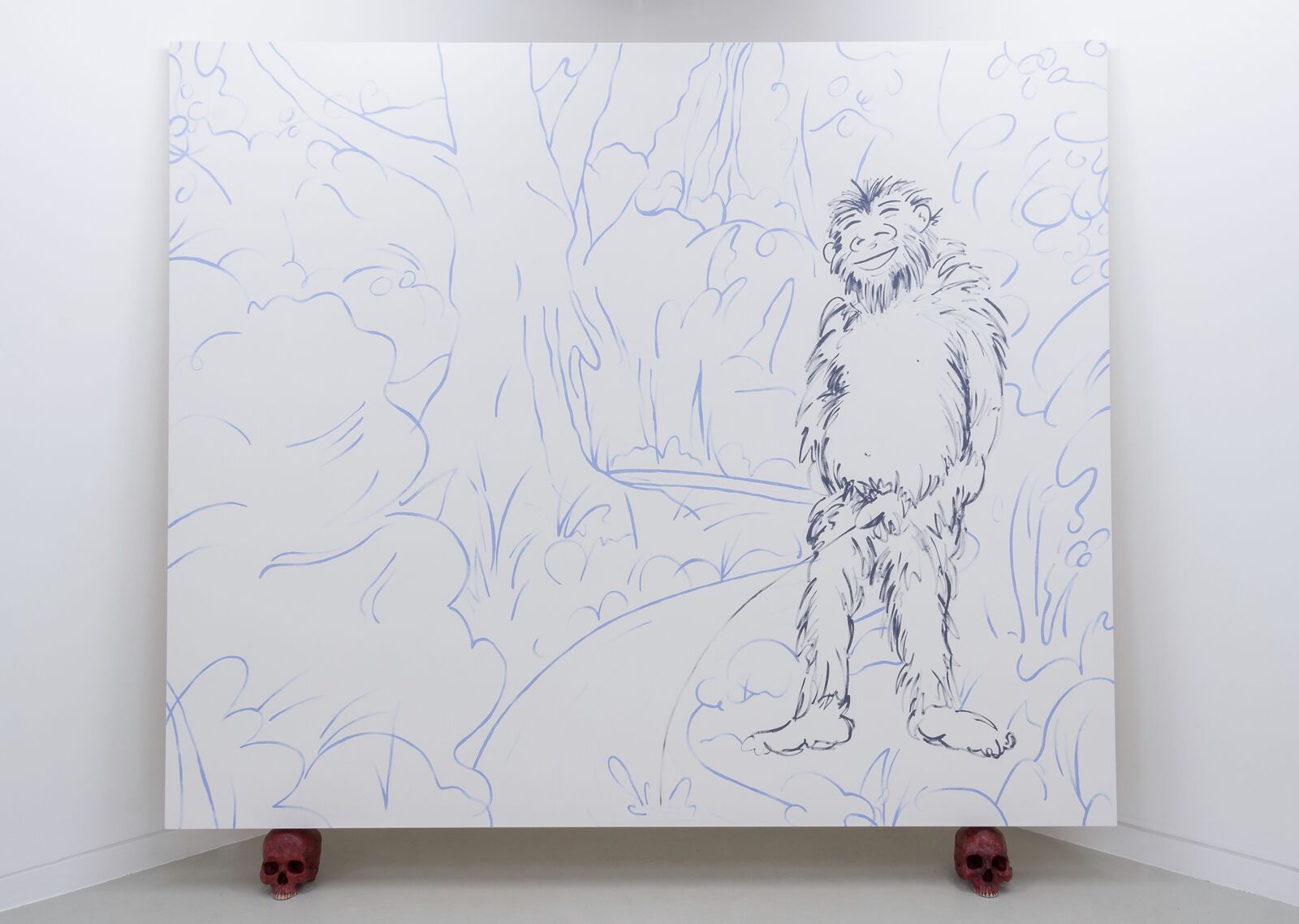 How has the work in this show developed from say the Ghebaly Gallery show in LA?
How has the work in this show developed from say the Ghebaly Gallery show in LA?
There are things that I come back to again and again but each project is unique, or each show is unique. There are of-course reoccurring themes but I’m not interested in the same kind of style of working, or material, or presentation. I make a show or I make a few pieces but then I start again.
The one thing I really try to get through with my practice is a real sense of creative freedom where it feels like I’m searching and playing very seriously with materials and ideas, but I’m not beholden to any one of them – I’m not loyal to any one of these things. Much of the art world is about creating expectations and then fulfilling those expectations and I think that the art world is the last place where that should happen. There was a time I made drawings and paintings that were always the same, as a younger man, and I sort of created a character and then I performed as that character and to me that felt like I may as well have just been working at the bank. Not that there’s anything wrong with working at the bank, but if you’re going to be an artist, to me, that’s what the lynchpin of it – or the key – is. This idea of a freedom creatively, intellectually that you can really move and investigate and discover new things and also fail miserably.
For me that’s a very rich experience – to kind of not really know where I’m going. I’m not interested in this quick success or this quick turnaround I really think of it as a whole lifetime of staying interested really. Interested in the world in some way. For me, art is a way to stay interested and excited about the physical world we live in.
Your press release mentions your ‘anti-bourgeois aesthetic’. How do you feel about the idea or art as a commodity?
I know some rich people that I really like. I know some artists who are incredibly wealthy and who make that kind of work – that I really enjoy – and that’s good for them but for me….I have hang-ups about class, and I come from a certain place, and I see art being made in a way that caters to those people. When that catering happens it kind of makes the the hair stand up on the back of my neck; because art is a thing where your audience can be incredibly small, and you can be incredibly successful, and in no other art form is that the case.
If you’re a writer, if you’re a musician, if you’re a movie maker and if only two people go to your movie nothing is gonna happen for you, but if only two really big collectors love your work you could be rich for the rest of your life. So the audience is already small and if you make it smaller by catering towards those kind of people, to me, it feels like your closing out a world. It’s already exclusive and to put more effort into that exclusivity feels like you’re kicking a dead horse.
I come from a background in music and that’s what I did first. I was in punk bands and as a kid I was really into that underground punk scene, so that mentality and way of thinking is something that is in me and will never leave.
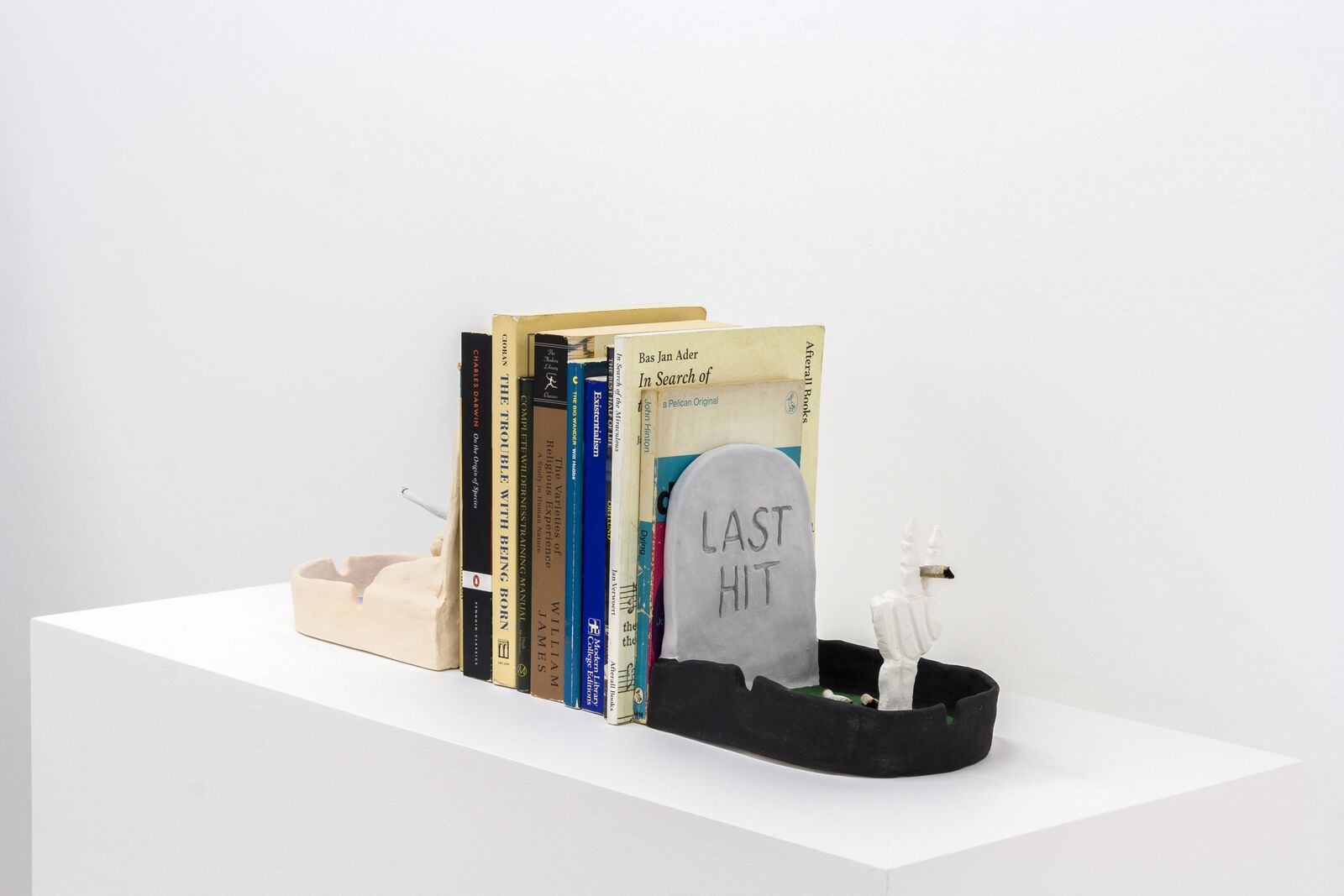 Does your musical background inform a lot of your visual art?
Does your musical background inform a lot of your visual art?
Not necessarily in the way it looks but in ideals. As a kid I started playing music and we wrote songs and learnt how to play those songs, which again is this side of expectation. Then in my early 20s I started playing in a band – that I still play in now 20 years later – and it became an improvisation band. So we would write somewhat structured songs and it was very noisy, very heavy, but really came from an improvisational jazz theory background. So this idea of playing and sort of working it out, and letting the music sort of tell you what to do, is the way I make work now.
When I’m making art, at least in my mind, the process of doing it is very similar. Also coming from that background of punk rock – that became somewhat improvisational – it’s not anti bourgeois but it’s anti pop. It kind of feels like you could fail at any moment and fail spectacularly, and to me that’s incredibly thrilling. Not in a way that I want to fail necessarily but I think that edge is where you really learn something. Not only about yourself but about your work in a way that feels more exciting than hitting on something then doing that thing for the next several decades. There are some artists that do that – and I actually like their work a lot – but a lot of artists where that’s their style, it’s a bit like, “well done”, and to me “job well done” is kind of the worst thing that anyone could say where my art is concerned.
A lot of your work has an ephemeral nature. Is it intentional to be making work that won’t last forever?
I’m not really interested in the work lasting longer than me. So when you’re making work that is made out of bronze or marble again it caters towards the collector, to that thing going up in value. It gets handed to generation to generation and I think that I want room. I want room for work to be alive and exciting and not about this thing that’s been around for hundreds of years that we all agree is important and amazing, but to me it’s kind of just taking up space. It’s taking up space that could be used by a young person who’s really excited about what they’re doing.
The art market is about these serious collectors maintaining the worth of their work – or increasing the worth of their work – and there are all these tactics employed to make sure that that happens. I fortunately, or unfortunately, am not in a position to be a participant in that. I can’t say that I don’t care about it but I do my best not to.
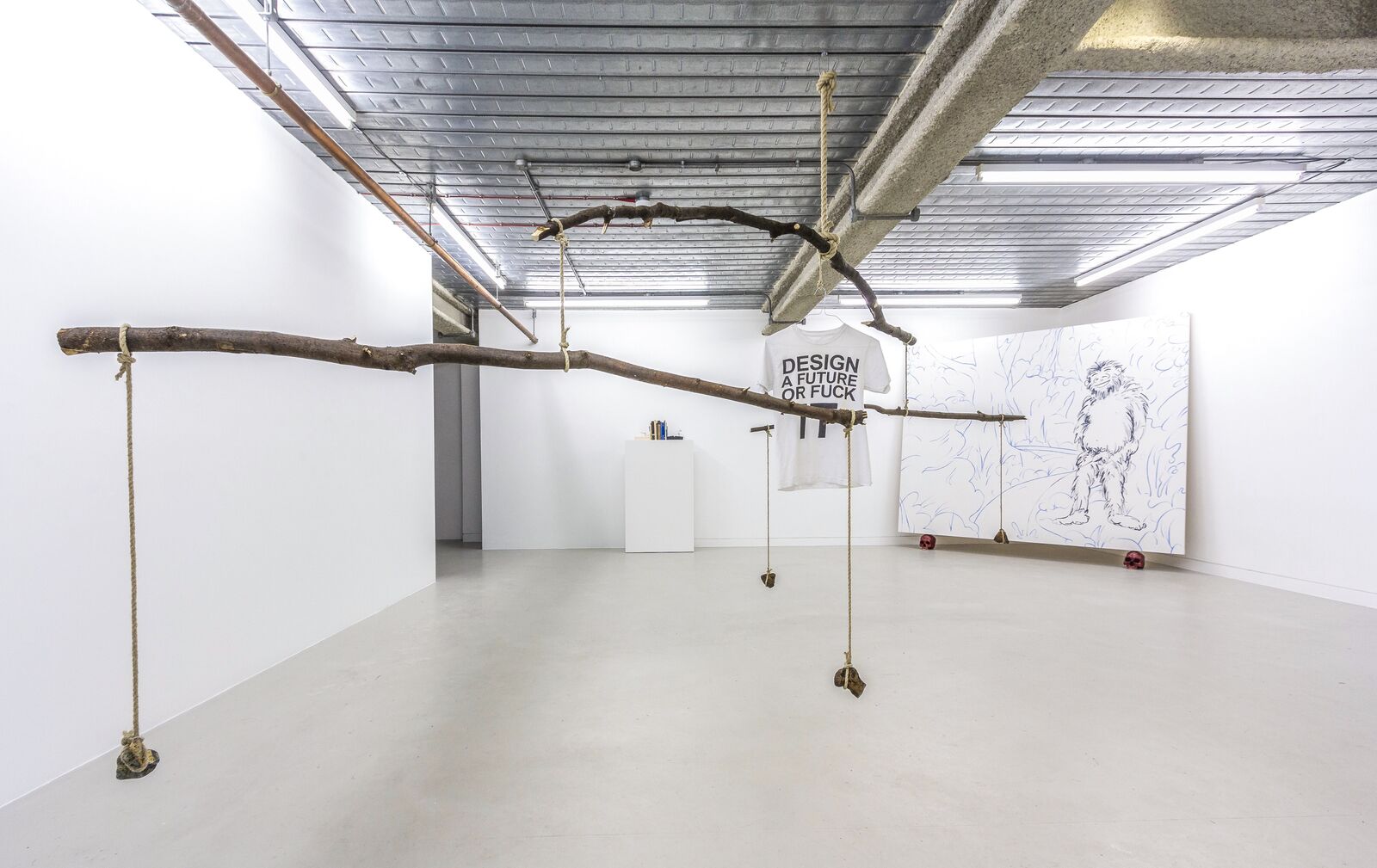 Joel Kyack’s show HOLD ON TIGHTLY / LET GO LIGHTLY is on at WORKPLACE gallery until the 20th of January.
Joel Kyack’s show HOLD ON TIGHTLY / LET GO LIGHTLY is on at WORKPLACE gallery until the 20th of January.

